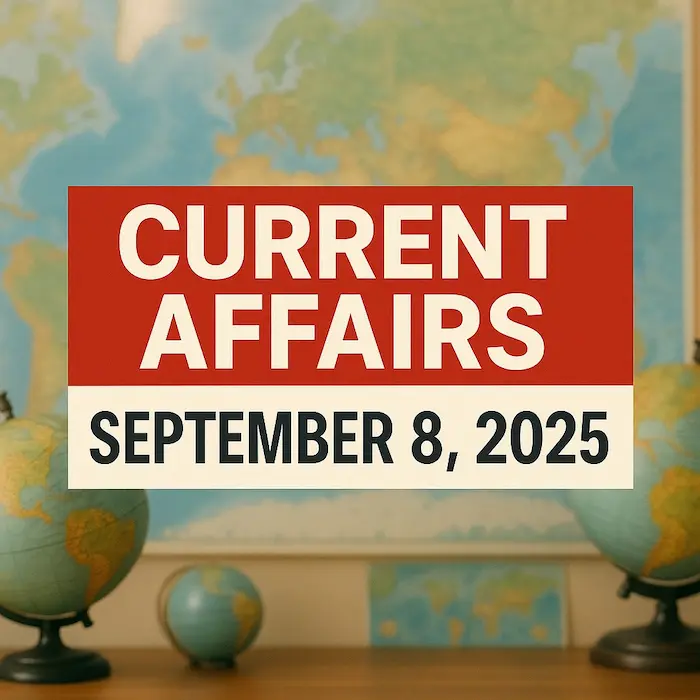1. Representation in the Rajya Sabha / Upper House of Parliament – Polity
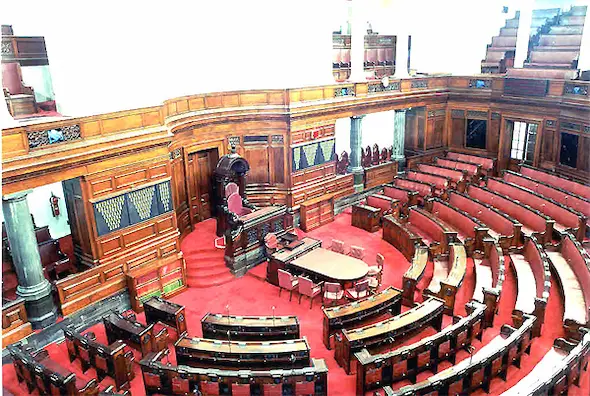
Why in News?
The Union Law and Justice Ministry has rejected the Election Commission’s proposal to issue a presidential order for staggering the terms of Jammu & Kashmir’s four Rajya Sabha seats. As a result, J&K has had no representation in the Upper House since 2021.
Context and Significance
- J&K’s Rajya Sabha seats fell vacant in 2021 during President’s Rule.
- Rajya Sabha representation is vital for ensuring federal balance and democratic legitimacy.
- Without representation, J&K missed participation in national-level elections, including the 2022 Presidential and Vice-Presidential polls.
Key Details
- Election Commission’s Proposal
- Suggested a Presidential Order to stagger the retirement of J&K’s Rajya Sabha members.
- Objective: Avoid simultaneous vacancies and ensure continuity.
- Historical Reference
- 1952 Presidential Order: After the first Rajya Sabha elections, members’ terms were staggered to establish a biennial retirement cycle.
- 1956 Order: Post-States Reorganisation, similar measures were taken.
- Constitutional Provision (Article 83)
- Rajya Sabha = permanent body, not dissolved.
- One-third members retire every 2 years (continuity ensured).
- Contrast: Lok Sabha has a fixed 5-year term.
- Problem in J&K (and Delhi)
- Due to President’s Rule and institutional disruptions since the 1990s, their Rajya Sabha terms became concurrent rather than staggered.
- Law Ministry’s Stand
- No current legal provision to issue such an order.
- Section 154, RPA 1951: Rajya Sabha members serve 6 years; staggered terms were allowed only at the initial constitution (1952) and 1956 amendment.
- Current Situation
- J&K has no Rajya Sabha MPs since 2021.
- Weakens its parliamentary voice and representation in national decision-making.
Way Forward
- A legislative amendment to the Representation of the People Act, 1951 is needed to restore staggered terms.
- Ensuring J&K’s representation will strengthen democratic integration, federalism, and legitimacy of the Rajya Sabha.
Exam Connect – Possible Questions
Prelims
1. With reference to the Rajya Sabha, consider the following statements:
1.Rajya Sabha is a permanent body, and one-third of its members retire every two years.
2.The Representation of the People Act, 1951 allows for Presidential Orders to stagger terms of Rajya Sabha members at any time.
3. Jammu & Kashmir has had no representation in Rajya Sabha since 2021.
Which of the above statements is/are correct?
A.1 and 2 only
B. 2 and 3 only
C.1 and 3 only
D.1, 2 and 3
Answer: C. 1 and 3 only
2. Section 154 of the Representation of the People Act, 1951 deals with:
A. Biennial retirement of Rajya Sabha members
B. Electoral rolls preparation for Lok Sabha
C. Disqualification of Members of Parliament
D. Election of the President of India
Answer: A.Biennial retirement of Rajya Sabha members
Mains
1. Critically analyze the implications of Jammu & Kashmir’s absence from the Rajya Sabha since 2021. How does it affect India’s federal structure and democratic legitimacy?
2. Article 83 establishes continuity in the Rajya Sabha through staggered retirements. Discuss the constitutional and legislative challenges in ensuring this mechanism for Union Territories like J&K and Delhi.
2. The Changing Dynamics of India’s Foreign Policy – International Relations
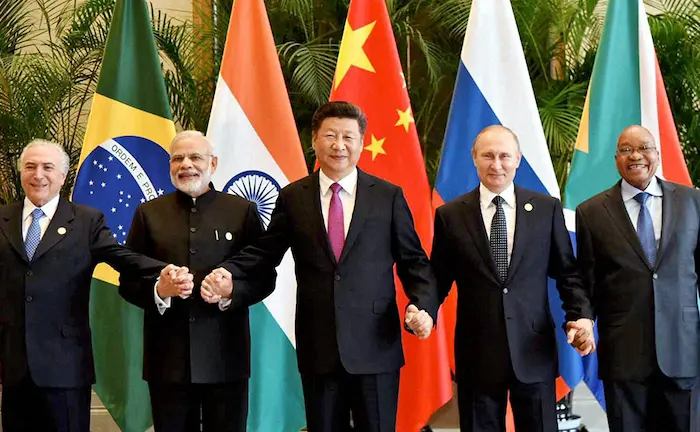
Why in News?
Prime Minister Narendra Modi’s participation in the SCO Summit at Tianjin drew global attention, especially due to a photo with Chinese President Xi Jinping and Russian President Vladimir Putin. The development triggered unease in the U.S., where President Donald Trump made sarcastic remarks amid tensions over tariffs and sanctions on India’s Russian oil imports.
Context and Significance
- The SCO summit illustrated India’s balancing act in a multipolar world.
- Despite border tensions with China and trade friction with the U.S., India continues to pursue strategic autonomy in foreign policy.
- The event underscored India’s dual approach: engaging with Eastern powers (China, Russia) while maintaining dialogue with Western partners (U.S., Quad).
Key Highlights of the SCO Summit
- China’s Global Governance Initiative
- Promoted by China as a vision for reshaping international order.
- India stressed civilisational dialogue and cooperation within SCO.
- India–China Engagement
- First Modi–Xi direct meeting since the 2020 Galwan clashes.
- Outcomes:
- Agreement to continue talks on boundary disputes.
- Revival of direct flights and visa facilitation.
- Suggests a cautious thaw, though strategic mistrust persists.
- India–Russia Partnership
- India maintains energy and defense ties despite Western criticism.
- Russia remains a long-term strategic partner.
- India–U.S. Tensions
- Disputes over tariffs and sanctions (especially Russian oil imports).
- Despite Trump’s criticism, both sides seek dialogue and cooperation.
- Upcoming UNGA and Quad summit will shape the trajectory of relations.
- Symbolism of the SCO Military Parade
- Parade in Beijing marking 80th anniversary of WWII’s end attended by global leaders.
- Reinforced China’s growing influence and India’s pragmatic participation.
Broader Implications
- India continues to follow a multi-alignment strategy, strengthening strategic autonomy.
- Shows ability to engage across divides—China-Russia bloc on one side, U.S.-led Quad on the other.
- Key challenge: managing contradictory expectations from great powers while safeguarding national interests.
Exam Connect – Possible Questions
Prelims
1. With reference to the Shanghai Cooperation Organisation (SCO), consider the following statements:
1.India and Pakistan became full members of the SCO in 2017.
2.The SCO summit in Tianjin was the first direct meeting between PM Modi and President Xi since the 2020 Galwan clashes.
3.The SCO was originally founded in 2001 by Russia, China, Kazakhstan, Kyrgyzstan, Tajikistan, and Uzbekistan.
Which of the above statements is/are correct?
A.1 and 2 only
B.1 and 3 only
C.2 and 3 only
D.1, 2 and 3
Answer: D.1, 2 and 3
2. India’s current foreign policy is often described as one of “strategic autonomy.” Which of the following best reflects this principle?
A. Aligning exclusively with the U.S. and Western powers in global politics
B. Maintaining balanced relations with competing global powers like the U.S., China, and Russia
C.Following a strict policy of non-engagement in international groupings
D. Restricting foreign relations to South Asian neighbours only
Answer: B. Maintaining balanced relations with competing global powers like the U.S., China, and Russia
Mains
1. India’s foreign policy is increasingly shaped by the need to balance relations with competing power blocs. Discuss this in light of the recent SCO summit and India’s ties with the U.S. and Russia.
2. Critically analyze the relevance of “strategic autonomy” in India’s foreign policy in a multipolar world. How does it differ from the earlier Non-Aligned Movement approach?
3. GST Rate Cuts 2025: Impact on Economy and Revenue – Economy
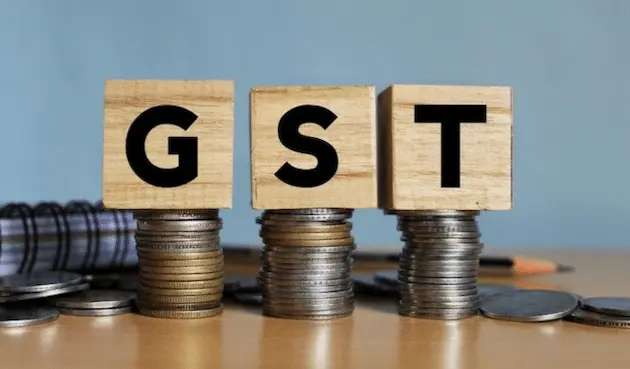
Why in News?
In September 2025, the GST Council approved major rate rationalisation, reducing GST slabs and cutting rates on over 90% of items. This represents the most significant reform of India’s indirect tax system since GST’s launch in 2017.
Context and Significance
- Aimed at boosting consumption and simplifying compliance.
- Supports demand amid global slowdown and domestic growth challenges.
- Reflects a pro-consumer approach, though concerns over revenue sustainability remain.
Key Features of GST Reform 2025
- Rationalisation of Slabs
- New structure: 0%, 5%, 18%, 40%.
- Merged intermediate slabs for simplicity.
- Wider Rate Reductions
- Out of 453 items reviewed, 413 items saw rate cuts.
- Many shifted from 12% → 5% category.
- Beneficiary Sectors
- Healthcare → cheaper medical devices & consumables.
- Renewable energy → reduced costs of solar/wind components.
- Real estate & construction → lower input costs.
- Consumer goods → more affordable household products.
- Concerns Raised
- Textiles & aviation sectors → some tax burdens increased despite overall reductions.
- Revenue risk → lower collections may strain fiscal resources.
Expected Outcomes
- Positive:
- Increased consumer demand → economic stimulus.
- Simplified tax structure → improved compliance and ease of doing business.
- Sectoral growth → healthcare, renewable energy, consumer goods.
- Challenges:
- Risk of short-term revenue shortfall for Centre & states.
- Uneven benefits across industries → possible disputes.
- Long-term success depends on whether higher consumption compensates lower tax rates.
Exam Connect – Possible Questions
Prelims
1. With reference to the GST reforms of 2025, consider the following statements:
1.The number of GST slabs has been reduced to 0%, 5%, 18%, and 40%.
2.More than 90% of the reviewed items experienced a rate cut.
3.The GST Council is chaired by the Prime Minister of India.
Which of the above statements is/are correct?
A.1 and 2 only
B.1 and 3 only
C.2 and 3 only
D.1, 2 and 3
Answer: A. 1 and 2 only
2. Which of the following sectors is expected to benefit the most from the GST rate cuts of 2025?
A. Renewable energy
B. Aviation
C. Textiles
D. Petroleum
Answer: A.Renewable energy
Mains
1. The GST rate cuts of 2025 have been hailed as a major step toward simplification of India’s indirect tax system. Critically examine their potential impact on economic growth and fiscal stability.
2. Discuss the significance of GST rationalisation for India’s consumer economy. How can the government balance tax simplification with the need to ensure sustainable revenue generation?
4. Spending on Children’s Education in India: An Analysis – Indian Society
Why in News?
India’s decline in the World Economic Forum’s Gender Gap Index has highlighted persistent gender disparities in education. Despite improved enrollment rates for girls—who now constitute 48% of students and slightly outnumber boys in higher education—families continue to spend significantly less on daughters’ education than on sons.
Context and Significance
- Education is a key driver of social equity and empowerment, especially for women.
- While enrollment rates suggest progress, financial commitment gaps reveal deep-rooted gender biases.
- This mismatch undermines India’s goals of inclusive growth and gender parity.
Key Findings from National Sample Survey (NSS)
- Expenditure Disparities
- Rural families spend about ₹1,373 (18%) more on boys than on girls.
- Urban families spend ₹2,791 less on girls compared to boys.
- At higher secondary level, urban households spend ~30% more on boys.
- Enrollment Patterns
- 58.4% of girls attend government schools.
- Only 34% of boys are in private unaided schools → boys more likely to access costlier private education.
- State-Level Variations
- Delhi: 65% of girls vs. 54% of boys in government schools.
- Kerala & Tamil Nadu: More equitable spending and enrollment.
- Telangana & West Bengal: Large spending gaps at higher secondary levels.
- Himachal Pradesh: Private tuition for boys (
₹9,813) vs. girls (₹1,550).
- Private Tuition & Higher Education
- Families more willing to invest in coaching/tuition for boys.
- Girls often deprived of supplementary learning opportunities.
- Cultural and Social Norms
- Preference for investing in sons as future breadwinners.
- Girls face early marriage, domestic responsibilities, and dropouts.
- Government Interventions
- Scholarships, subsidies, and incentives for girls may reduce reported household spending, but do not fully address quality and access gaps.
Broader Implications
- Persistent gender gap in spending undermines SDG 4 (Quality Education) and SDG 5 (Gender Equality).
- Reinforces cycles of economic dependence and reduced workforce participation among women.
- Highlights the need for policy measures beyond enrollment, focusing on investment parity.
Exam Connect – Possible Questions
Prelims
1. According to recent NSS data on educational spending in India:
1.Rural families spend significantly more on boys’ education than on girls.
2.Girls have higher enrollment in private unaided schools than boys.
3.Government subsidies may contribute to lower reported household expenditure on girls.
Which of the above statements is/are correct?
A.1 and 2 only
B.1 and 3 only
C. 2 and 3 only
D. 1, 2 and 3
Answer: B. 1 and 3 only
2. Which of the following states shows more equitable enrollment and spending on boys and girls in education?
A. Himachal Pradesh
B. Telangana
C. Tamil Nadu
D. West Bengal
Answer: C.Tamil Nadu
Mains
1. Despite rising enrollment of girls in schools and higher education, spending on their education continues to lag behind boys. Analyze the socio-economic and cultural reasons for this disparity.
2. Discuss the role of government interventions in reducing the gender gap in education in India. Suggest additional policy measures to ensure equal financial commitment towards girls’ education.
5. Sample Registration System (SRS) Statistical Report 2023 – Economy
Why in News?
The SRS Statistical Report 2023 highlights important demographic trends in India, including a decline in fertility rates and mortality rates.
Key Findings
- Total Fertility Rate (TFR)
- India’s TFR declined to 1.9 (2023) → below replacement level fertility (2.1).
- Highest TFR: Bihar (2.8).
- Lowest TFR: Delhi (1.2).
- Significance: Declining fertility signals demographic transition, lower population growth, and potential aging challenges in the long run.
- Crude Birth Rate (CBR)
- Declined from 19.1 (2022) → 18.4 (2023).
- Definition: Number of live births per 1,000 people in a year.
- Sex Ratio at Birth (SRB)
- National average (2021–23): 917 girls per 1,000 boys.
- Highest SRB: Chhattisgarh (974).
- Lowest SRB: Uttarakhand (868).
- Significance: Persistent gender bias in child survival and cultural preference for sons.
- Mortality Trends
- Crude Death Rate (CDR): 6.4 (2023).
- Infant Mortality Rate (IMR): 25 (2023).
- Declining IMR indicates improvement in public health & maternal-child care.
About the Sample Registration System (SRS)
- Conducted by: Office of the Registrar General of India.
- Nature: Continuous demographic survey covering vital events.
- Scope: Provides estimates for fertility, mortality, and population growth.
- Indicators Covered:
- Fertility: TFR, CBR, Age-Specific Fertility Rate (ASFR), General Fertility Rate (GFR).
- Mortality: IMR, CDR, maternal mortality (through supplements).
- Importance: Crucial for policy planning, health interventions, and assessing progress toward SDGs.
Broader Implications
- Positive: India nearing population stabilization; better health infrastructure; decline in child mortality.
- Concerns:
- Low SRB highlights continuing gender discrimination.
- Regional disparities (Bihar vs. Delhi) → uneven demographic transition.
- Future challenge: Aging population & shrinking workforce with sustained low TFR.
Exam Connect – Possible Questions
Prelims
1. With reference to the Sample Registration System (SRS), consider the following statements:
1.It is conducted by the National Statistical Office (NSO).
2.It provides national and sub-national estimates of fertility and mortality indicators.
3.The Total Fertility Rate in India has fallen below replacement level as per the 2023 report.
Which of the above statements is/are correct?
A.1 and 2 only
B. 2 and 3 only
C.1 and 3 only
D.1, 2 and 3
Answer: B. 2 and 3 only
2. As per the SRS Statistical Report 2023, which of the following states recorded the highest Total Fertility Rate (TFR)?
A. Uttar Pradesh
B. Bihar
C. Rajasthan
D. Madhya Pradesh
Answer: B. Bihar
Mains
1. The decline in India’s fertility and mortality rates reflects a demographic transition. Discuss the opportunities and challenges this poses for India’s economy and society.
2. Despite improvements in enrollment and healthcare, India’s Sex Ratio at Birth (SRB) remains unfavorable. Analyze the socio-cultural and policy factors behind this trend.
6. Biodiversity Beyond National Jurisdiction (BBNJ) Agreement / High Seas Treaty – Environment
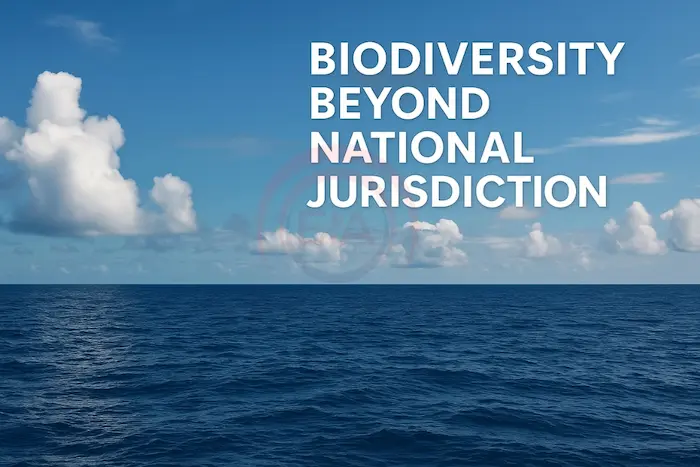
Why in News?
The Ministry of Earth Sciences has set up a 12-member committee to safeguard India’s interests in international ocean waters under the Biodiversity Beyond National Jurisdiction (BBNJ) Agreement, also known as the High Seas Treaty.
What is the BBNJ Agreement?
- Adopted: 2023, under the framework of UNCLOS (1982).
- Objective: To conserve biodiversity, regulate human activities, and ensure sustainable use of marine resources in areas beyond national jurisdiction (i.e., high seas).
- India’s Status: Signed in 2024, but not yet ratified (ratification = legal commitment).
Scope of the Treaty
- Marine Protected Areas (MPAs):
- Establishes MPAs in high seas (like national parks at sea) to protect ecosystems.
- Regulation of Extractive Activities:
- Controls activities such as deep-sea mining.
- Ensures equitable sharing of benefits from marine genetic resources.
- Environmental Impact Assessments (EIAs):
- Mandatory EIAs for projects with potential impact on the high seas—even if conducted within a country’s EEZ.
- Support for Developing Nations:
- Technology transfer, capacity building, and equitable resource access.
High Seas: Key Facts
- Definition: Areas beyond 200 nautical miles (370 km) from coastlines (beyond EEZs).
- Extent: Cover 64% of world’s oceans and 50% of Earth’s surface.
- Importance:
- Marine biodiversity hotspot.
- Critical for climate regulation, carbon absorption, solar energy storage, and heat distribution.
- Source of seafood, raw materials, genetic resources, and medicines.
- Protection Status: Only ~1% of high seas currently protected.
United Nations Convention on the Law of the Sea (UNCLOS, 1982)
- Provides legal framework for marine activities.
- Divides ocean into 5 zones:
- Internal Waters
- Territorial Sea (12 nm)
- Contiguous Zone (24 nm)
- Exclusive Economic Zone (EEZ – 200 nm)
- High Seas (beyond EEZ).
Significance for India
- India has a large EEZ (2.37 million sq. km) and strategic interests in the Indian Ocean.
- Participation ensures:
- Protection of India’s blue economy.
- Safeguarding future access to marine resources.
- Balancing conservation and economic interests.
Challenges
- Ratification pending in India → delay in legal commitment.
- Geopolitical contestation over seabed mining and genetic resources.
- Limited capacity for enforcement in vast high seas.
Exam Connect – Possible Questions
Prelims
1. With reference to the High Seas Treaty (BBNJ Agreement), consider the following statements:
1.It was adopted under the framework of UNCLOS in 2023.
2.It mandates Environmental Impact Assessments (EIAs) for activities in the high seas.
3.India has ratified the treaty, making it legally binding for the country.
Which of the above statements is/are correct?
A.1 and 2 only
B.2 and 3 only
C.1 and 3 only
D.1, 2 and 3
Answer: A. 1 and 2 only
2. Which of the following zones under UNCLOS extends up to 200 nautical miles from the baseline?
A. Territorial Sea
B. Contiguous Zone
C. Exclusive Economic Zone (EEZ)
D. High Seas
Answer: C. Exclusive Economic Zone (EEZ)
Mains
1. Discuss the significance of the Biodiversity Beyond National Jurisdiction (BBNJ) Agreement for global ocean governance. How does it balance conservation with equitable use of resources?
2. India has signed but not yet ratified the BBNJ Agreement. Examine the opportunities and challenges for India in implementing this treaty in the context of its blue economy ambitions.

